

 Is it time to scrap “New World Wine”?
Is it time to scrap “New World Wine”?
Not the wines of course but the generalising description of a group of wines using those words.
“This feels like a New World wine” is something we sometimes hear when people taste blind. We sometimes use that description ourselves. It usually means that the wine is full-bodied, with lots of ripe fruit, sometimes even over-ripe, almost overwhelming and usually with rather little tannins. Often easy-to-drink “gulpable” that you can drink just by itself and not necessarily with food. Sometimes it can be a power-bomb. Rarely structured with distinct, solid tannins. And a good dose of oak.
If it is a white it would also be full-bodied, not much acidity, and often with a quite a lot vanilla oak character.
But it is probably time to retire this expression, New World style. At least if you use it in that way.
We have just returned from Chile and Argentina and at the end of the week we leave for South Africa. This is wine tours that we do every February and March since quite a few years back. All three countries are obviously in the New World category, but very few of the wines that we taste on our tours fit the descriptions above.
Going back a decade, or maybe two this categorisation felt more appropriate. But today it seems to me a thing of the past. Many wine producers in the New World make great wines, with plenty of freshness and structure (two, for us, important things), and clean fresh fruit. We rarely see the heavy, boring, over-oaked body-building wines that the style description brings to mind. Yesterday, for example, we had a delicious pinotage-syrah-merlot blend from South Africa with and excellent fruit and structure.
So it is time to look at the New World in a New Light. And above all not make over-drastic generalisations. Instead, let’s go looking for the really talented New World winemakers. There are plenty.
In fact, sometimes I get the impression that some winemakers in the “Old World” (Europe) have now taken the lead in the old New World style, especially those who want to make an exclusive and rare prestige cuvée. It is often in that category that I today encounter super-extracted, super-oaked, and, yes, superfluous wines.
For the rest… plenty of reading this month but don’t miss the few remaining spaces on the spring tour to Bordeaux. A great place to go in spring.
And we have now the full autumn program finalised with some exciting news (Alentejo, Piedmont), as well as classics (Bordeaux, the Douro Valley). (Special call-out for Alentejo that due to a mistake was dropped from the list last month. Do take a look at that tour program!)
Britt & Per
PS: Recommend to your friends to read the Brief!
– – – – –
What’s on at BKWine Tours
Spring 2017
(with places left)
- Bordeaux, May 3-7, 2017
Autumn / fall 2017
- Bordeaux, September 27 – October 1
- Piedmont, wine and truffles, October 18-22
- Douro Valley, Portugal, October 18-22
- Alentejo and Setubal, October 25-29
For more information please contact us on email or on phone (we’re on French time), or go to our wine travel site on www.bkwinetours.com!
We also make custom designed wine tours – on-demand tours for you and a group of friends, for your company (maybe to scout new winegrowers?), for a special event… We can combine winery visits and wine touring with other activities: gastronomic workshops, visit to an oyster farm, truffles hunting, cheese making, and more. More info on the custom designed and bespoke BKWine wine tours and travel here!
Read our book(s)
We have written several wine books, nine at the last count. One of them has been translated to English; the others are (so far) only available in Swedish. This is the one that is available in English: Biodynamic, Organic and Natural Winemaking, Sustainable Viticulture and Viniculture
All our books are on wine, but on different subjects: wines of the Languedoc, wine growing and wine making, the wines of France, Tuscany, Bordeaux, Piedmont, Burgundy, Champagne. Several have won prestigeous prizes and awards. Read more on our wine books.
From the World of Wine
In Brief
In short, news and stuff from the world of wine.
Time for our next book: Champagne
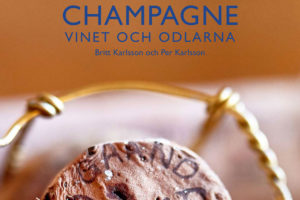 On March 22 we will be launching our next book (in Stockholm). It is a different kind of champagne book. We do of course go into the details of how champagne is made, the grapes, the history etc, but in addition to that we give you a lot of insider information that is rarely talked about in Champagne. So it gives the reader a unique inside into this sparkling wine.
On March 22 we will be launching our next book (in Stockholm). It is a different kind of champagne book. We do of course go into the details of how champagne is made, the grapes, the history etc, but in addition to that we give you a lot of insider information that is rarely talked about in Champagne. So it gives the reader a unique inside into this sparkling wine.
But what makes this book really different is that the second part of the book, on wine producers, is dedicated exclusively to what is called “growers’ champagne”. These are the independent, often family-owned small wine producers who both grow the vines and make the wine. (As opposed to the big and famous “houses” that everyone is familiar with, that are mainly marketing driven “négociant” producers who buy grapes from grape growers.) The growers’ champagnes is the most exciting sector today of this northern French wine regions. It is here that you find the most individual and individualistic expressions of grapes, terroir, climate and winemaking. The book is unfortunately so far only available in Swedish. Read more here: Champagne, the Wine and the Growers.
Pinot Grigio, still trendy
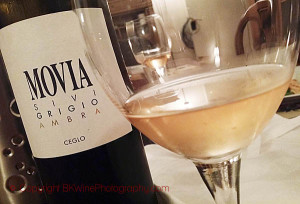 Pinot Grigio in Italy does not have many similarities with Pinot Gris in Alsace. It is not only the name that is different, but also the style and, not least, the popularity. Pinot Grigio has increased enormously its acreage in Italy since 2010. Right now there are about 25 000 hectares (the whole of France has less than 3000 hectares). So popular is Italian Pinot Grigio that it will soon have a new appellation. This new DOC will be called Pinot Grigio delle Venezie. It is precisely here, in the north-eastern part of Italy, that 85% of the country’s Pinot Grigio is planted.
Pinot Grigio in Italy does not have many similarities with Pinot Gris in Alsace. It is not only the name that is different, but also the style and, not least, the popularity. Pinot Grigio has increased enormously its acreage in Italy since 2010. Right now there are about 25 000 hectares (the whole of France has less than 3000 hectares). So popular is Italian Pinot Grigio that it will soon have a new appellation. This new DOC will be called Pinot Grigio delle Venezie. It is precisely here, in the north-eastern part of Italy, that 85% of the country’s Pinot Grigio is planted.
Pinot grigio became a trendy grape primarily in the UK and in America a few years ago. And its popularity seems to continue. Here in Italy the grape gives a fairly easy drinking, fresh, slightly floral wine with citrus aromas. But a richer, oaky style is also available. Read more: vitisphere.com
Protection against hail
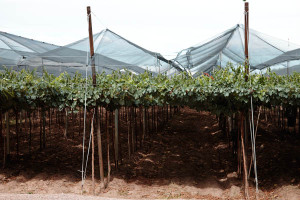 In Mendoza in Argentina they have nets to protect the vines against hail. In Burgundy they prefer to launch silver nitrate rockets in to the clouds. The effect is that the hail grains become smaller and fall more slowly to the ground. Hopefully. This is not a system that works all the time. But obviously the producers believe in this method and now 45 000 hectares, almost the whole of the Burgundy vine surface, is covered by this protection. Burgundy, as well as several other wine regions in France, has been hit hard by hail in recent years.
In Mendoza in Argentina they have nets to protect the vines against hail. In Burgundy they prefer to launch silver nitrate rockets in to the clouds. The effect is that the hail grains become smaller and fall more slowly to the ground. Hopefully. This is not a system that works all the time. But obviously the producers believe in this method and now 45 000 hectares, almost the whole of the Burgundy vine surface, is covered by this protection. Burgundy, as well as several other wine regions in France, has been hit hard by hail in recent years.
This spring 90 new generators will join the 53 already in place. And then only one important detail remains. Finding people that are prepared to launch the rockets when the time comes. Read more vitisphere.com
When the Amazon recommendations makes you happy
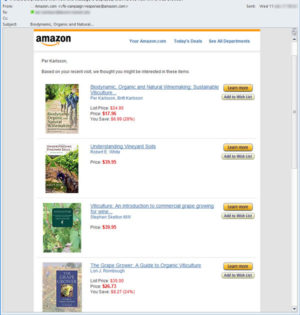 If you shop at Amazon you are no doubt familiar with their recurring marketing mails. Depending on what you have previously bought and looked at they send you recommendations for other things “that might interest you”. The other day I had one of those mail after having browsed for some technical wine books.
If you shop at Amazon you are no doubt familiar with their recurring marketing mails. Depending on what you have previously bought and looked at they send you recommendations for other things “that might interest you”. The other day I had one of those mail after having browsed for some technical wine books.
At the top of the list was a book that I actually already have, and under it there were several other interesting ones: Understanding Vineyard Soils by Robert E White, Viticulture by Stephen Skelton, The Grape Grower by Lon Rombough and more.
The book at the top of the list was Biodynamic, Organic, and Natural Winemaking. Read more on the link. An essential book for anyone who wants to understand what organic and biodynamic wine really is.
Limoux, a different part of the Languedoc
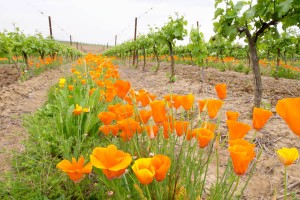 When you think of Languedoc you probably think warm, sunny days and rich full-bodied wines made from grapes like grenache and carignan. But the reality is more varied than that. In the 1970s the growers started to plant the Chenin Blanc in Limoux, in the south-western part of the Languedoc. The idea was that chenin would give freshness to the local grape Mauzac. It proved a success and soon Chenin was followed by Chardonnay and Pinot noir. These cool climate grapes thrive here in Limoux, a region that is located close enough to the Atlantic Ocean and high enough to provide a cooler climate than the rest of the Languedoc.
When you think of Languedoc you probably think warm, sunny days and rich full-bodied wines made from grapes like grenache and carignan. But the reality is more varied than that. In the 1970s the growers started to plant the Chenin Blanc in Limoux, in the south-western part of the Languedoc. The idea was that chenin would give freshness to the local grape Mauzac. It proved a success and soon Chenin was followed by Chardonnay and Pinot noir. These cool climate grapes thrive here in Limoux, a region that is located close enough to the Atlantic Ocean and high enough to provide a cooler climate than the rest of the Languedoc.
The white wines of Limoux are well worth looking for. They are made of chardonnay, chenin and / or Mauzac with compulsory fermentation in oak barrels. Limoux most famous wines, however, are the sparkling Crémant de Limoux, made mostly with chardonnay and chenin, and the local speciality Blanquette de Limoux, with at least 90% Mauzac.
A future with herbicides replaced by thermal foam?
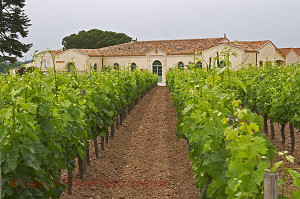 More and more herbicides are prohibited. What will happen to glyphosate and flumioxazin, two key ingredients in a variety of herbicides, is currently unclear. Many winemakers are preparing for a future without chemical weed removal. But there is no lack of new inventions. An Italian company will soon launch a new thermal weed control called Schiumone.
More and more herbicides are prohibited. What will happen to glyphosate and flumioxazin, two key ingredients in a variety of herbicides, is currently unclear. Many winemakers are preparing for a future without chemical weed removal. But there is no lack of new inventions. An Italian company will soon launch a new thermal weed control called Schiumone.
Schiumone produces a 75 degree Celsius foam that are sprayed in the vineyard, under the vines. The weeds are eliminated thanks to the heat. The University of Milan will investigate if the heat in any way affects negatively the vines. The idea is to have the product approved for organic viticulture. Not removing the weeds at all is an alternative that many winemakers today practice. Learn more about thermal weed removal and see the video tecnovict.com
Mysterious buyer of the Corton forest upsets growers
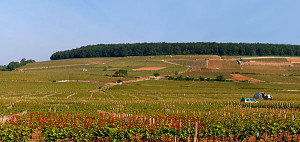 The Corton hill is Burgundy’s biggest grand cru vineyard. On the slopes of the hill just north of Beaune pinot noir and chardonnay are grown side by side. On top of the hill there is 66 hectares of forest. Rumours have it that this forest is about to change owners. The wine producers are upset, to say the least. It doesn’t help that the buyer is said to be prepared to pay 1.5 million euros for the forest instead of the market price of 300,000 euros. The forest is not on any appellation land. What will the new owner do with it? The winegrowers are imagining the worst. What if he deforests and builds a hotel!?
The Corton hill is Burgundy’s biggest grand cru vineyard. On the slopes of the hill just north of Beaune pinot noir and chardonnay are grown side by side. On top of the hill there is 66 hectares of forest. Rumours have it that this forest is about to change owners. The wine producers are upset, to say the least. It doesn’t help that the buyer is said to be prepared to pay 1.5 million euros for the forest instead of the market price of 300,000 euros. The forest is not on any appellation land. What will the new owner do with it? The winegrowers are imagining the worst. What if he deforests and builds a hotel!?
Deforest will affect the climate around the hill, says the winegrowers. Not to mention the aesthetic aspects. Officials say that deforesting is not allowed in the area. The growers are not so certain. To be continued. Read more bourgogneaujourdhui.com
The book series ”Guide to the World of Wine” nominated at the Gourmand Awards 2017
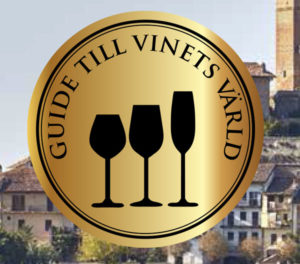 BKWine’s book series “Guide to the World of Wine” (Guide till vinets värld) has been nominated in the Gourmand World Cookbook Awards in the category Wine Tourism. Gourmand is an international competition for books on food and drinks. The awards ceremony, and announcement of winners, will take place in China on May 27. The books series has so far four volumes: Bordeaux, Burgundy, Tuscany, and Piedmont. The books have been published by Tukan Publishers. Each book gives the reader a short but fact-filled introduction to the regions’ wines. You can read more on Guide to the World of Wine here.
BKWine’s book series “Guide to the World of Wine” (Guide till vinets värld) has been nominated in the Gourmand World Cookbook Awards in the category Wine Tourism. Gourmand is an international competition for books on food and drinks. The awards ceremony, and announcement of winners, will take place in China on May 27. The books series has so far four volumes: Bordeaux, Burgundy, Tuscany, and Piedmont. The books have been published by Tukan Publishers. Each book gives the reader a short but fact-filled introduction to the regions’ wines. You can read more on Guide to the World of Wine here.
Keep your fingers crossed for us on May 27!
Cognac is doing well on the export markets
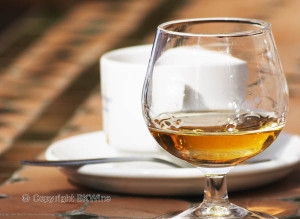 The French wine and spirits exports hit an all-time high in 2016. In total France exported wine and spirits at a value of 11.9 billion euros. This was an increase of 1.2% from the year before. Now this was actually not thanks to the wine but to the French spirits, more particularly Cognac.
The French wine and spirits exports hit an all-time high in 2016. In total France exported wine and spirits at a value of 11.9 billion euros. This was an increase of 1.2% from the year before. Now this was actually not thanks to the wine but to the French spirits, more particularly Cognac.
Cognac did a record year in 2016 in terms of both volume and value. The spirits account for around 4 billion euros, that is one third of the total value of exports of wine and spirits. Read more: larvf.com
Features
Features that we have published during the past month, with lots of reading for you.
Domaine du Moulin, Gaillac Cuvée Speciale 2015 – now with malolactic fermentation
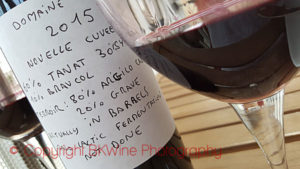 In November we tasted new wines from Domaine du Moulin in Gaillac. It was a barrel sample taken before the malolactic fermentation. We have now tasted the same wine, still a barrel sample, but with the malolactic fermentation in barrel completed. Was there a difference? Absolutely. The acidity was still quite high but now much more balanced. The wine was powerful and rich and harmonious.
In November we tasted new wines from Domaine du Moulin in Gaillac. It was a barrel sample taken before the malolactic fermentation. We have now tasted the same wine, still a barrel sample, but with the malolactic fermentation in barrel completed. Was there a difference? Absolutely. The acidity was still quite high but now much more balanced. The wine was powerful and rich and harmonious.
Read the rest of Britt’s article on this curious experience on BKWine Magazine: Domaine du Moulin, Gaillac Cuvée Speciale 2015 – now with malolactic fermentation.
Tasting Roserock Drouhin Oregon Wines, Eola-Amity Hills
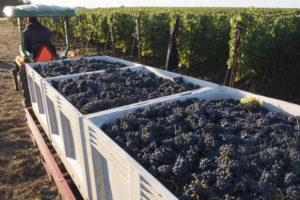 Tasting wines by Véronique Drouhin Boss resembles attending a piano concerto – each pour an elegant opus reverberating with its own inner core of subdued structure and grace. This is a follow up to the earlier article Tasting Domaine Drouhin Oregon wines, Dundee Hills.
Tasting wines by Véronique Drouhin Boss resembles attending a piano concerto – each pour an elegant opus reverberating with its own inner core of subdued structure and grace. This is a follow up to the earlier article Tasting Domaine Drouhin Oregon wines, Dundee Hills.
Read LM Archer’s article on BKWine Magazine: Tasting Roserock Drouhin Oregon Wines, Eola-Amity Hills.
Garnachas de Gredos, a wine region not far from Madrid
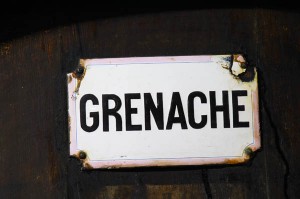 Gredos. It’s not a misspelling of ‘credos’ or clever mispronunciation of ’Speedos’, rather a breathtakingly scenic mountainous area 1.5 hours’ drive west of Madrid called Sierra de Gredos. This recently emerged trend is based on old vine Garnacha and the local white Albillo Real fashioned, mostly by a younger crowd taking over from pensioners, often with organic growing, used large oak barrels along with the ancient style clay jars called ‘tinajas’, and no added yeasts into a niche that has caught on fire in Spain and a bit with geekier segments of the US/UK wine crowd.
Gredos. It’s not a misspelling of ‘credos’ or clever mispronunciation of ’Speedos’, rather a breathtakingly scenic mountainous area 1.5 hours’ drive west of Madrid called Sierra de Gredos. This recently emerged trend is based on old vine Garnacha and the local white Albillo Real fashioned, mostly by a younger crowd taking over from pensioners, often with organic growing, used large oak barrels along with the ancient style clay jars called ‘tinajas’, and no added yeasts into a niche that has caught on fire in Spain and a bit with geekier segments of the US/UK wine crowd.
Read David Furer’s article on BKWine Magazine: Garnachas de Gredos, a wine region not far from Madrid.
The Swedish alcohol monopoly increases profits by 21% to 23 million euro
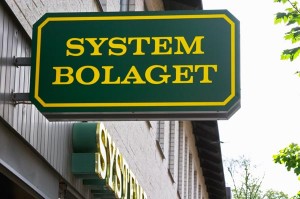 Systembolaget, the Swedish alcohol monopoly, has published its financial statements. It had a turnover in 2016 of 28.5 billion SEK (3 bn euro), an increase of 3%. The profit (operating profit) amounted to SEK 217 million (23 million euro), an increase of 21% from 2015, a not entirely insignificant profit from a company who likes to give the impression of not being profit oriented. In connection with the annual report announcement Systembolaget also announces the “support” they feel they have for its monopoly, “the public support for Systembolaget’s exclusive retail right”, that they claim is supported by 76% of the population…
Systembolaget, the Swedish alcohol monopoly, has published its financial statements. It had a turnover in 2016 of 28.5 billion SEK (3 bn euro), an increase of 3%. The profit (operating profit) amounted to SEK 217 million (23 million euro), an increase of 21% from 2015, a not entirely insignificant profit from a company who likes to give the impression of not being profit oriented. In connection with the annual report announcement Systembolaget also announces the “support” they feel they have for its monopoly, “the public support for Systembolaget’s exclusive retail right”, that they claim is supported by 76% of the population…
Read Per’s article on BKWine Magazine: The Swedish alcohol monopoly increases profits by 21% to 23 million euro.
Come si mangia l’olio! How to eat olive oil! – A new book
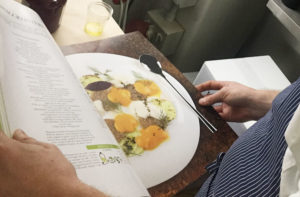 Come si mangia l’olio is the title of a new book published recently in Italy. The book contains recipes from six chefs: Gaetano Simonato (Tano Passami l’Olio, Milan), Vito Mollica (Il Palagio, Firenze), Lino Scarallo (Palazzo Petrucci, Naples), Guido Havercock (La Tavola di Guido, Castellina in Chianti) Oliver Glowig (Ristorante Oliver Glowig, Rome), Pietro Leemann (Joia, Milan) and the pizza chef Vincenzo Capuano (Rossopomodoro Lab, Milan). The book is full of information and great photos. The authors are three passionate olive oil lovers (extra vergine, what else?) Marco Provinciali, Andrea Leonardi Filippo Falugiani.
Come si mangia l’olio is the title of a new book published recently in Italy. The book contains recipes from six chefs: Gaetano Simonato (Tano Passami l’Olio, Milan), Vito Mollica (Il Palagio, Firenze), Lino Scarallo (Palazzo Petrucci, Naples), Guido Havercock (La Tavola di Guido, Castellina in Chianti) Oliver Glowig (Ristorante Oliver Glowig, Rome), Pietro Leemann (Joia, Milan) and the pizza chef Vincenzo Capuano (Rossopomodoro Lab, Milan). The book is full of information and great photos. The authors are three passionate olive oil lovers (extra vergine, what else?) Marco Provinciali, Andrea Leonardi Filippo Falugiani.
Read Åsa Johansson’s article on BKWine Magazine: Come si mangia l’olio! How to eat olive oil! – A new book.
The Renaissance of Gin, part 1 and part 2
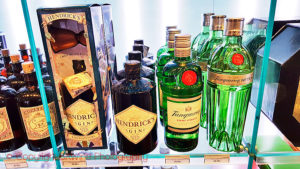 The essay in four parts explores the history of gin up until 1985, its production, the revival in consumption over the past 30 years, and looks forward to how the market might develop over the next 10 years. This essay focuses primarily on the UK market although reference is made to other markets where relevant, particularly the US and Spain. The Philippines market, the largest by volume, is addressed only briefly as international brands have a negligible presence and the (declining) market is mainly entry level, “Dutch-style” gin.
The essay in four parts explores the history of gin up until 1985, its production, the revival in consumption over the past 30 years, and looks forward to how the market might develop over the next 10 years. This essay focuses primarily on the UK market although reference is made to other markets where relevant, particularly the US and Spain. The Philippines market, the largest by volume, is addressed only briefly as international brands have a negligible presence and the (declining) market is mainly entry level, “Dutch-style” gin.
Read Andrew de Csillery’s article on BKWine Magazine: Part 1: Introduction and the History of Gin from the Middle Ages to 1985, and part 2: Production of Gin, how process variations result in different flavours
Favourite wines from the Primewine importer range
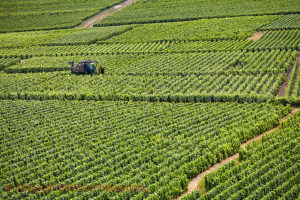 BKWine Magazine’s reporter Tobias Karlsson recommends some favourite wines from the importer Primewine Group. Several of them are widely available in other countries too.
BKWine Magazine’s reporter Tobias Karlsson recommends some favourite wines from the importer Primewine Group. Several of them are widely available in other countries too.
Read Tobias Karlsson’s article, including some thoughts on the Swedish monopoly’s big-or-not-so-big range, on BKWine Magazine: Favourite wines from the Primewine importer range.
Sicilian gastronomy: Giuseppe Raciti wins the prestigious contest
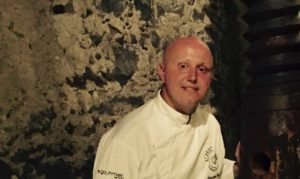 Giuseppe Raciti, a thirty year ‘old Sicilian chef recently won the contest for chefs under thirty in southern Italy. The contest took place at Hotel Palace in Mondello, a holiday village just outside Palermo and was organized by the on line magazine Cronache di Gusto. BKWine Magazine’s Asa Johansson caught Giuseppe for a short interview.
Giuseppe Raciti, a thirty year ‘old Sicilian chef recently won the contest for chefs under thirty in southern Italy. The contest took place at Hotel Palace in Mondello, a holiday village just outside Palermo and was organized by the on line magazine Cronache di Gusto. BKWine Magazine’s Asa Johansson caught Giuseppe for a short interview.
Read Åsa Johansson’s article on BKWine Magazine: Sicilian gastronomy: Giuseppe Raciti wins the prestigious contest.
Artisan Winemaker Don Hagge of Vidon Vineyard, Oregon
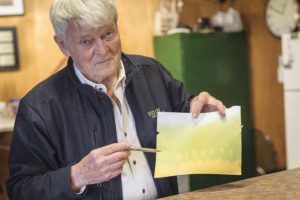 Ever hear that phrase, “Who do you think you are? A rocket scientist?” Well, today’s guest IS a rocket scientist. One part humble Midwestern farm boy, one part retired NASA astrophysicist-turned-winemaker, Don Hagge of Vidon Vineyard (vee-dohn) talks softly and drives a big tractor. And at age 85, instead of slowing down, Don shoots for the moon – including a recent new release of his estate wines based upon NASA’s iconic space program, as well as implementation of a proprietary argon wine preservation tap system in his tasting room.
Ever hear that phrase, “Who do you think you are? A rocket scientist?” Well, today’s guest IS a rocket scientist. One part humble Midwestern farm boy, one part retired NASA astrophysicist-turned-winemaker, Don Hagge of Vidon Vineyard (vee-dohn) talks softly and drives a big tractor. And at age 85, instead of slowing down, Don shoots for the moon – including a recent new release of his estate wines based upon NASA’s iconic space program, as well as implementation of a proprietary argon wine preservation tap system in his tasting room.
Read LM Archer’s article on BKWine Magazine: Artisan Winemaker Don Hagge of Vidon Vineyard, Oregon.
Wine tours
Some information about current and future wine tours with BKWine.
Bordeaux and its famous grape varieties | wine tour
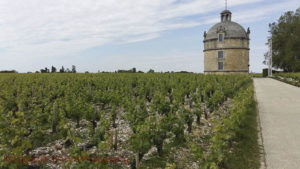 The Bordeaux grape varieties are known all over the world. All of them have travelled and happily settled in other wine regions. Cabernet Sauvignon and Merlot are found almost everywhere today. Cabernet Franc is making its way towards global fame as is Petit Verdot, albeit on a lesser scale. Malbec is much more planted in Mendoza than in Bordeaux today. Carmenère is all but extinct in Bordeaux but has found a new home in Chile.
The Bordeaux grape varieties are known all over the world. All of them have travelled and happily settled in other wine regions. Cabernet Sauvignon and Merlot are found almost everywhere today. Cabernet Franc is making its way towards global fame as is Petit Verdot, albeit on a lesser scale. Malbec is much more planted in Mendoza than in Bordeaux today. Carmenère is all but extinct in Bordeaux but has found a new home in Chile.
Also the white Bordeaux grapes are spread around the world. Sauvignon Blanc of course, but now also Sémillon is getting more and more attention in countries like South Africa and Argentina. It is a brilliant grape, in many ways more complex than Sauvignon Blanc. Join is on our spring tour to Bordeaux and taste all these grapes in their home country. The Bordeaux wine tour takes place in May.
3 Classics: Champagne, Chablis and Burgundy | wine tour
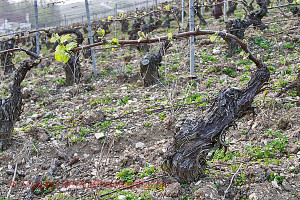 Chablis wines are not like Chardonnay wines from anywhere else. Chablis is of course made with 100% Chardonnay but the wine taste more “Chablis” than Chardonnay. If any wine can be said to have a terroir-style, it is Chablis. It is difficult to imitate the crispy, fresh style of Chablis. Sometimes the acidity is quite sharp, sometimes a bit softer; sometimes there is some aging in oak barrels but rarely too much.
Chablis wines are not like Chardonnay wines from anywhere else. Chablis is of course made with 100% Chardonnay but the wine taste more “Chablis” than Chardonnay. If any wine can be said to have a terroir-style, it is Chablis. It is difficult to imitate the crispy, fresh style of Chablis. Sometimes the acidity is quite sharp, sometimes a bit softer; sometimes there is some aging in oak barrels but rarely too much.
On this tour that we call the 3 Classics, we get the opportunity to compare Chablis and the white wines from the Côte de Beaune. There are about 150 kilometres in between but the winemaking, the climate and the soil have changed. Both Chablis and the Côte de Beaune belong to Burgundy, a fascinating and complex wine region. There are over 100 different appellations and a variety of vineyard names may appear on the labels. It may seem complicated, but you will have a good grasp of all this when we reach Paris again! Champagne is also included in the 3 Classics wine tour.
Focus on Etna on Sicily | wine tour
The climate in Sicily is warm and dry. But the landscape is mountainous and it can rain a lot when you get up in the mountains, as much as 1000 mm a year in some places. The mountains cool the vines and give a nice freshness to the wines. Hot days and cool nights in the region of Etna give a long growing season to the grapes and the harvest can be as late as the end of October or November.
But mostly it is a dry growing season. A good climate, says many growers, because they do not have to spray their vines so much. There are plenty of organic producers and some biodynamic ones. Many are experimenting with “natural wines”. Others like to try new things, like fermentation and ageing in clay pots (not really new of course, this was done thousands of years ago). Here’s more on a sample wine tour to Sicily.
Wine tours autumn 2017: France, Portugal, Italy
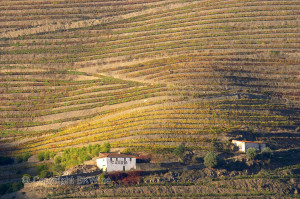 Our wine tours for autumn 2017 are now available on bkwinetours.com. New tours this year is Piedmont, a gastronomic experience as well as a wine tour to the exciting and dynamic Alentejo in southern Portugal.
Our wine tours for autumn 2017 are now available on bkwinetours.com. New tours this year is Piedmont, a gastronomic experience as well as a wine tour to the exciting and dynamic Alentejo in southern Portugal.
Bordeaux, 27 September – 1 October
This is probably harvest time in Bordeaux so there will be a lot of activities in the vineyards and in the cellars. Perhaps we will see the new, advanced sorting machines in action. An experience!
Douro Valley in northern Portugal, 18-22 October
The Douro valley grapes are growing in one of the world’s most spectacular scenery. The producers use methods that no one else uses anymore, for instance foot treading in large lagars. However, modern methods are used also. We will taste both port wines and normal red and white wines.
Piedmont, Wine, Food and Truffles, October 18-22
Barolo and Barbaresco are some of Italy’s most famous wines. It is not surprising. They are great personalities. Another grape worth discovering is Barbera, quite unique also.
Alentejo and Setubal, Portugal, 25-29 October
Here in Alentejo the quality revolution of Portuguese wines started. And the quality continues to improve. Wine producers from other regions have made major investments here. Alentejo is a fascinating landscape, filled with cork oaks and vines.
Don’t be an egoist! Share with your friends and other wine enthusiasts! Forward the Brief to your friends! Suggest that they sign up for a free subscription !
© Copyright BKWine







